#charlie gillespie icons
Text



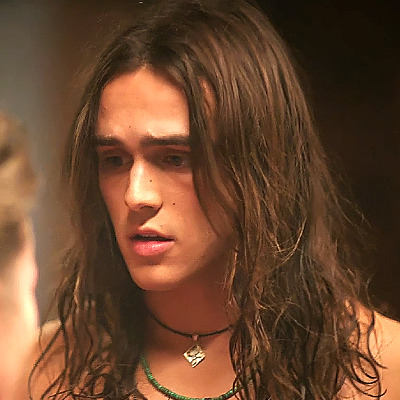

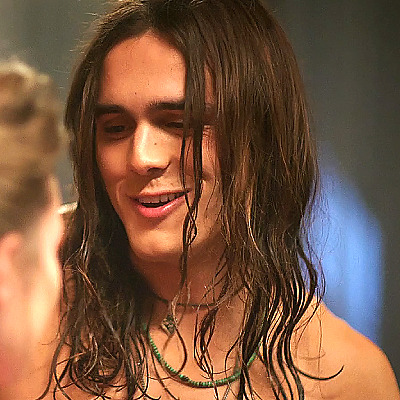

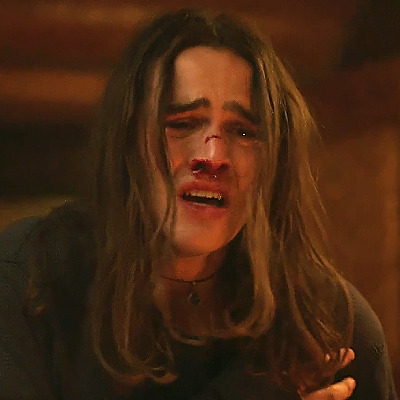


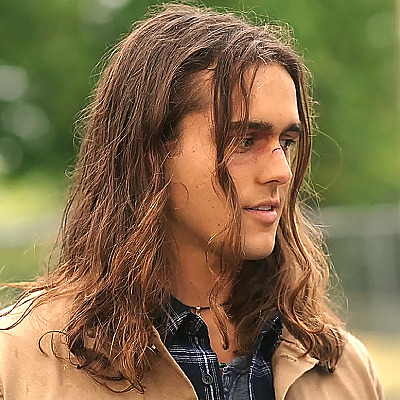

Blake Hughes — Totally Killer (2023)
#charlie gillespie#charlie gillespie icons#charliegillespieedit#cgillespieedit#blake hughes#blake hughes icons#totally killer icons#totally killer#totallykilleredit#screencaps#twitter icons#horror icons#icons without psd#movie icons#icons#horroredit#movieedit#slasher icons#slasheredit#2023#filmedit
178 notes
·
View notes
Text

*& charlie gillespie dash icons !!
( * 4 dash icons under the cut * )




#charlie gillespie#charlie gillespie icons#charlie gillespie dash icons#dash icons#rph#icons#cgillespieedit#mine: icons
17 notes
·
View notes
Text
Gif 01

#madison bailey gifs#charlie gillespie icons#jatp fic#julie and the phantoms#luke patterson#kiara carrera
4 notes
·
View notes
Text






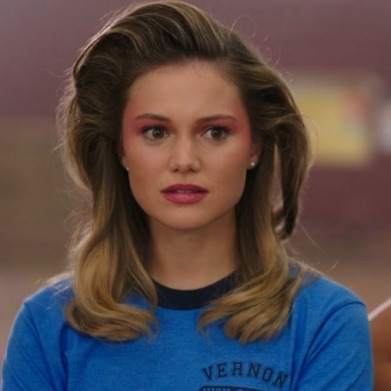
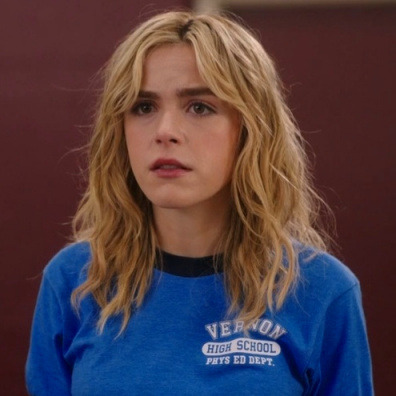

like or reblog if you save. ♡
#icons#icons request#totally killer#totally killer movie#scary movies#movie icons#kiernan shipka#jamie hughes#olivia holt#pam miller#charlie gillespie#troy leigh anne johnson#kiernan shipka icons#olivia holt icons#80s#80s aesthetic#80s vibes#slasher film
35 notes
·
View notes
Text
*✶ charlie gillespie in totally killer
— semi-private commission — a total of # 54 gif icons ( 80x80 ) have been delivered. he’s white, was born in 1998. please cast accordingly and use appropriately. the sizes aren't the ones i normally use but i was takinga request so if you want to use my gifs, dm me and i will share the link.
trigger warnings : kissing and drinking


11 notes
·
View notes
Text
💛 by pressing the keep reading button below - you will be directed to 88 GIF ICONS of the beautiful CHARLIE GILLESPIE {mostly with his tarzan hair} the size is 75px - please like / reblog if you find these useful.




























































































































#charlie gillespie gif pack#charlie gillespie gif icons#charlie gillespie#charlie gillespie gif hunt#gif icons#gif pack#charliegillespiedit
14 notes
·
View notes
Text
✨ through the LINK BELOW you will find +115 GIFS of CHARLIE GILLESPIE in the movie LOVE YOU ANYWAY. all gifs were capped, cropped & edited by by sugar. you can edit them for personal use, or for gif icons - credit is appreciated. these are intended for roleplay/personal use only.
GIF PAGE



146 notes
·
View notes
Text

GIF PACK / CHARLIE GILLESPIE ( by sugarsource )
$$ free !! • ( or pay what you want !! )
capped, clipped, cropped & edited by ; sugarsource
project source ; deltopia trailer | youtube
get the gif pack ; payhip
gif pack commissions are ; open.
please do not use these gifs in the following manners • to portray minor characters, k*nk/t*b*o roleplay, real life celebrity roleplay !!
do not steal, resell, or claim as your own work • these gifs can be cropped into gif icons, but credit is required if you release the pack ; you must credit me in the post !!



33 notes
·
View notes
Text


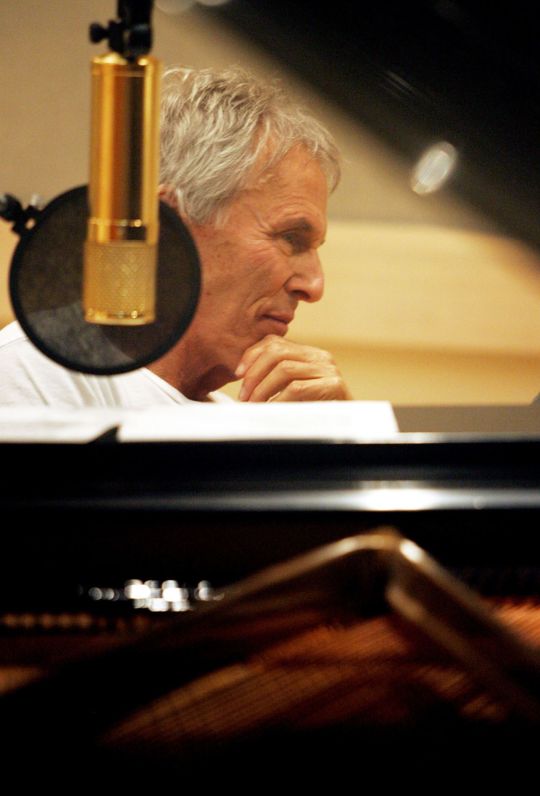
Coming up on a quarter of a century ago I had the great joy of interviewing Burt Bacharach for Black & White. This was on the tail end of his 1999 South American tour and a couple of weeks before the Birmingham show.
Still can't believe how generous he was with his time, and it cracks me up that, while I have most of his music in my very DNA, I can't hear any of those iconic tunes without thinking of what Bacharach's kitchen prep sounded like. Here's the chat from November of 1999.
What’s New, Bacharach?
It’s 11:30 a.m. in Los Angeles at Burt Bacharach’s house, and judging from sounds picked up by the speaker phone, he’s rambling around trying to put some kind of breakfast or brunch together.
He arrived last night from a tour in Argentina, and in his own words, he’s “kind of whacked.” Nonetheless, his conversational tone is as bright and pleasant as…well, a Bacharach tune, with a kind of stop-start inflection that keeps one guessing if more words are to follow.
“Hold on a second, don’t go anywhere”, he says before going after what sounds like more ice. A full minute later, “Are you there? Okay, good.”
Black & White: Let’s talk about your youth, specifically that time when music first began making a deep impression on you.
Burt Bacharach: 52nd Street. The jazz club scene, without question. In the late ’40s, when I’m a teenager seeing Dizzy Gillespie, Charlie Parker, those guys. I was hooked.
I got caught up in what they were doing in terms of, first of all, the excitement and stirring quality of the music, but technically speaking those artists were inventing possibilities. Not merely new songs, but new sounds.
B&W: Considering the tremendous transitions in popular music from 1946 to 1966, your music seems to fall somewhere between the American songbook, Tin Pan Alley tradition, and the less mainstream realm of sophisticated time signatures, chord shifts, and other elements of the jazz sound that impressed you so much.
Bacharach: Elements. That’s a good point. Yes, I’m sure my influences, in terms of composition, come from that, but I was also profoundly impressed, in my music studies, with Ravel and Debussy. I was intrigued very early by that music.
If you want to say my songs are sophisticated, I have to credit those influences. I see what you mean by tremendous range, that’s one of the best aspects of late popular music, but you really don’t have to cover a span of 20 years. Just start with Harry James and move to Charlie Parker and you have a tremendous shift in music.
B&W: It seems that the odds would be against a songwriter, such as yourself, using complicated elements to make popular music or hit songs.
Bacharach: [laughing] Are my songs complicated?
B&W: I’ll put it in terms of a paradox: keeping time with “This Boy’s In Love,” or “I’ll Never Fall in Love Again” is a challenge. They are tricky songs, you must admit. Yet for those of us growing up in the ’60s and ’70s, your music was ubiquitous, a new song every 3 or 4 months, each with a melody that is now instantly recognized and adored.
Bacharach: Well, I certainly don’t try to make things difficult for the listener. [laughing] Sorry about that.
You’ll have to admit, on the other hand, that I’m not writing anything now nearly as—let’s say complex—as “Promises, Promises.” But all along I was just trying to stay with what pleased me, what I thought sounded good.
More importantly, I have always written what I was comfortable with, which meant staying with certain musical values; I wasn’t deliberately trying to be “sophisticated.”
But you don’t want to write cheap, you know? It’s like being involved with a person really, when you create a song. You want to get up the next day or the next week and feel good about yourself. If a certain phrasing or 7/8 chord sounds good, I think you have to stay with it. You don’t try to anticipate what the public will like. You stay with the values.
B&W: There is another paradox in many of your songs: those infectious, upbeat melodies are accompanied by lyrics that convey poignancy or even melancholy. These songs are mindful of the pitfalls of romance, the tension involved.
Bacharach: Well, I think when you can get something like that going, that contrast, and you can put a meaningful story there, that’s what you’re after. Hal [Hal David, longtime Bacharach collaborator] is great lyric writer.
He has a terrific way of taking care of certain notes, matching the right vowel with a high note, you know what I mean?
A love song deals with the heart, and so with that passion everything is heightened, “I’m gonna live forever”; “each day I’m falling more in love,” that sort of feeling.
We have a lot of songs like that, I think “Anyone Who Had a Heart” gets those ideas across.
B&W: Have you ever been surprised by a particular interpretation?
Bacharach: [laughing] There have been all kind of surprises. One record that I love, really love, that’s kind of different from the way I wrote it, is Aretha Franklin doing “Say a Little Prayer.” Oh, it’s brilliant. And a surprise, certainly.
B&W: What kind of music are you most likely to listen to today?
Bacharach: Brazilian music. We just finished a South American tour; that may be why. But really it’s a kind of music from which I’ve always derived a lot of pleasure. When I worked with Sergio Mendes, and he’s great, Sergio’s wonderful; I enjoyed Brazil so much.
B&W: You are also enjoying a new generation of fans right now. Elvis Costello, Michael Myers, and the electronica and lounge-core crowds seem universally to admire your music.
Bacharach: I think it’s great; you can’t plan that. It’s gratifying.
These kids weren’t even born when this music was first recorded. It’s not a revival, they’re hearing it for the first time.
I was just so pleased that Michael Myers wanted me to be a part of the Austin Powers movies. Great guy. He’s brilliant and hilarious. Very quick.
In those two scenes in those pictures, I was just laughing and smiling through the entire shot. I wasn’t acting; I found it all just too much.
B&W: Has there been a moment at which you thought to yourself, “Wow, I’ve written the soundtrack to a good portion of the 20th century?”
Bacharach: Actually, no, I’ve never said that to myself. I don’t think I will. I’m approached sometimes with compliments like that, people who talk in terms of my contribution to popular music, and it is certainly flattering.
I’m very uneasy with that kind of idea, though.
I’m extremely happy to do what I do for so long, with so much success, but I just can’t look at it in those terms. Having a show go well, I mean, giving a good performance is much more appealing to me.
B&W: From where you’re standing, do you know the way to San Jose?
Bacharach: Ha! Oh gosh. Well, you know I have found my own way there a couple of times.
I worked with the symphony and it’s a really nice town. For specific directions, I think you’d have to ask Hal David.
20 notes
·
View notes
Text
One of the leading musicians to emerge from Detroit's modern jazz explosion in the 1940s and '50s, Harris remained indefatigable into his early 90s. He led weekly workshops in New York, appeared in clubs and concert halls and traveled the world to teach and spread the gospel of bebop — the post-war style that became the lingua franca of the music.
Harris channeled the language and spirit of bebop's founding fathers — alto saxophonist Charlie Parker, trumpeter Dizzy Gillespie, pianists Bud Powell and Thelonious Monk — through his own foxy wit, vivid harmonic imagination and distinctive rhythmic rumble. But he was more than a sterling soloist and keeper of the flame. He was a Talmudic scholar of bebop; a beacon of artistic integrity and generosity; and a swinging Socrates, guiding students in a quest for truth, beauty and the hippest chords to play on "Indiana" and "Embraceable You."
At a time when the traditional apprentice system all but collapsed in jazz, Harris represented a direct link to the pantheon. His authority descended from a lifetime of bandstand and recording experience with countless iconic figures.
2 notes
·
View notes
Text

Link
The recording facility in Notting Hill houses six studios and a suite of purpose-built offices. It had been owned until now by musician and producer Trevor Horn.
Under Horn’s stewardship, Sarm Studios has played host to artists including Paul McCartney, Rihanna, Dua Lipa, Madonna, One Direction, Stormzy, Lana Del Rey, Paolo Nutini, Charli XCX, Mark Ronson and Florence & The Machine.
With the purchase completed, the complex will undergo refurbishment before becoming “a fundamental part of the Three Six Zero ecosystem”, according to a statement.
“The purchase represents a significant move by Three Six Zero to create a central hub in London, strengthening their UK foundations and providing a valuable stepping stone to Europe,” said the company.
The facilities will be readily available to all Three Six Zero clients and partners, while the Sarm Studios complex will also serve as the new base for Three Six Zero Recordings.
“Sarm Studios has long been an integral fixture of London’s music landscape, and we’re thrilled to be able to make it a part of the expanding Three Six Zero community,” said Mark Gillespie, CEO & founder, Three Six Zero.
Trevor Horn said: “I would like to wish Three Six Zero all the best in their new home.”
“Inspired and excited that Three Six Zero Recordings’ first UK base is going to be in such an iconic spot that, together with the rest of the TSZ family, we intend to make a vital creative hub in West London to carry on Trevor Horn’s legacy,” said Pete Tong, president, Three Six Zero Recordings.
Three Six Zero, is an independent management and entertainment partnership at the forefront of the music, film, television, and digital content landscape. With offices in Los Angeles, Miami, and London, the company represents global talent including Calvin Harris, Willow, Majid Jordan, Bloodpop, The Streets and Jabari Banks.
—
Note the article above no longer lists Louis amongst their notable global clients, in contrary to this MBW article on TSZ recordings from 27 June 2019:
Launched in 2018, Three Six Zero Recordings is a joint venture between Sony Music and Gillespie’s well-established management company, Three Six Zero.
Under [Peter] Tong’s leadership, the label will look to further establish a strong presence in the electronic music space by building upon its current roster.
As part of his role, Tong will also oversee the release of all soundtracks for Three Six Zero produced film and television content.
Operations for the label will be split between Los Angeles and London.
CEO of Sony Music Entertainment, Rob Stringer said, “Pete is obviously a legendary innovator in dance music globally so him joining this exciting new chapter of Three Six Zero is a huge coup for Mark and in turn for Sony Music!”
In addition to [Calvin] Harris, Three Six Zero represents musical and entertainment clients including, among others, Will Smith, Tiësto, Jada Pinkett Smith, Spider-verse lead Shameik Moore, Louis Tomlinson, Jaden Smith, Willow Smith and Brady Corbet.
Pete Tong, well known as a DJ and artist, is also a sigificant industry figure.
In 2008 he joined WME and co-created the Electronic Music Division where he will continue to consult as partner & client.
Tong previously worked as A&R director for London Records / FFRR and is a founding partner of The International Music Summit (IMS) in Ibiza.
16 notes
·
View notes
Text
Thelonious Monk: Architect of Jazz Innovation and Uniqueness
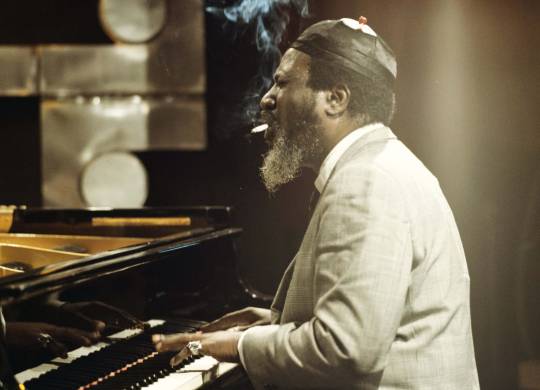
In the rich tapestry of jazz history, the name Thelonious Monk stands as a beacon of innovation, unpredictability, and sheer artistic brilliance. Born on October 10, 1917, in Rocky Mount, North Carolina, Monk emerged as one of the most influential figures in the world of jazz, leaving an indelible mark on the genre with his distinctive approach to composition and improvisation. Step into the enigmatic world of jazz with our Thelonious Monk-inspired T-shirts, a sartorial ode to the timeless eccentricity and musical genius of the legendary pianist.
Early Years and Musical Upbringing
Thelonious Sphere Monk's musical journey began in his early childhood. Raised in New York City, Monk's exposure to music came primarily through the church, where his mother, Barbara, served as the church organist. Monk's early interest in the piano was nurtured by his family, and by the age of 11, he had already begun to showcase his prodigious talent.
Innovations in Jazz Harmony and Rhythm
Monk's impact on jazz is perhaps most prominently felt in the realm of harmony. His unique approach to chord voicings and dissonant intervals challenged the conventional norms of the time. Monk's compositions, such as "Round Midnight" and "Blue Monk," are characterized by their unconventional harmonic structures, marked by angular melodies and unexpected chord progressions.
His use of dissonance, often incorporating clusters of notes played in close proximity, created a sense of tension and release that was revolutionary in the jazz landscape. Monk's harmonic innovations laid the foundation for future generations of jazz musicians to explore new possibilities in tonality and expression.
The Pianistic Genius
Monk's distinctive pianism is immediately recognizable. His percussive and angular playing style, coupled with his penchant for dissonant chords, created a sonic signature that set him apart from his contemporaries. The rhythmic complexity of Monk's playing, characterized by unexpected accents and pauses, added an additional layer of intrigue to his performances.
His influence on piano technique and style extended beyond his compositions. Monk's idiosyncratic approach to the instrument, with his use of staccato accents and unexpected pauses, challenged the conventional norms of jazz piano playing. His innovations continue to resonate in the work of countless pianists who have drawn inspiration from Monk's groundbreaking style.
The Birth of Bebop and Monk's Role
The 1940s saw the emergence of the bebop movement, a revolutionary shift in jazz characterized by rapid tempos, complex harmonies, and intricate improvisation. Monk played a crucial role in shaping the bebop sound, collaborating with pioneers such as Charlie Parker and Dizzy Gillespie. His compositions, including "Well, You Needn't" and "Epistrophy," became emblematic of the bebop era.
While Monk's contemporaries were often at the forefront of the bebop movement, Monk's own unique contributions were sometimes overshadowed. His compositions, though revered by fellow musicians, did not always find immediate commercial success. Nevertheless, Monk's uncompromising commitment to his artistic vision and his refusal to conform to established norms set him apart as a true innovator.
The Legendary Monk Quartet
In the mid-1950s, Monk formed the legendary Thelonious Monk Quartet, a group that featured John Coltrane on tenor saxophone, Wilbur Ware on bass, and Shadow Wilson on drums. This quartet, often hailed as one of the greatest in the history of jazz, produced some of Monk's most iconic recordings.
The partnership with Coltrane, in particular, was a meeting of two musical giants. Coltrane's fiery and expressive playing complemented Monk's idiosyncratic compositions, creating a synergy that elevated both artists to new heights. The recordings from this period, including the album "Thelonious Monk with John Coltrane," are celebrated as masterpieces of jazz collaboration.
Monk's Compositional Legacy
Thelonious Monk's compositions have become an integral part of the jazz repertoire. His tunes, characterized by their memorable melodies and intricate harmonic structures, continue to be studied and performed by musicians around the world. "Round Midnight," arguably Monk's most famous composition, has been recorded by countless artists and remains a jazz standard.
Monk's compositional style was rooted in a deep understanding of the blues, and his ability to infuse bluesy sensibilities into complex harmonic settings contributed to the enduring appeal of his music. His compositions often featured unexpected rhythmic twists and turns, keeping both musicians and listeners on their toes.
The Jazz Vanguard: Monk's Impact on the Genre
Beyond his contributions as a pianist and composer, Monk played a pivotal role in shaping the broader landscape of jazz. His unapologetic commitment to originality and innovation encouraged other musicians to explore their own unique voices. Monk's impact extended beyond the confines of bebop, influencing the development of post-bop, free jazz, and avant-garde jazz.
Monk's insistence on individual expression and his rejection of musical conventions opened doors for future generations of jazz artists to embrace their creative instincts. His influence is evident in the work of avant-garde musicians such as Cecil Taylor and Ornette Coleman, who drew inspiration from Monk's fearless approach to musical exploration.
Challenges and Recognition
Despite his undeniable genius, Monk faced challenges in his career. His unorthodox playing style and sometimes unpredictable behavior led to periods of public misunderstanding. In 1951, Monk's cabaret card was revoked in New York City, a setback that restricted his ability to perform in local venues for several years.
However, Monk's fortunes began to change in the late 1950s and early 1960s. With the support of fellow musicians and growing recognition of his artistic contributions, Monk experienced a resurgence in his career. In 1964, he appeared on the cover of Time magazine, a significant acknowledgment of his status as a jazz innovator.
Later Years and Recognition
In the latter part of his career, Monk continued to tour and record prolifically. His later albums, including "Monk's Dream" (1963) and "Criss-Cross" (1963), showcased his enduring creativity. Monk's impact on jazz was further recognized when he was awarded the prestigious Grammy Lifetime Achievement Award in 1997, a fitting tribute to his lasting contributions to the genre.
Monk's Persona: Quirks and Eccentricities
Thelonious Monk's persona was as distinctive as his music. Known for his distinctive sense of style, which often included distinctive hats and sunglasses, Monk's onstage presence reflected his offbeat approach to life. His penchant for abrupt pauses during performances, as well as his sometimes enigmatic behavior, only added to the mystique surrounding the man and his music.
Legacy and Influence
Thelonious Monk's legacy endures not only through his recordings but also through the impact he had on the evolution of jazz. His uncompromising commitment to originality and his fearless exploration of musical possibilities continue to inspire musicians across genres. Monk's influence can be heard in the work of pianists ranging from Herbie Hancock and Chick Corea to modern innovators like Brad Mehldau.
Monk's compositions remain a rite of passage for jazz musicians, a testament to the enduring power of his musical vision. His contributions to jazz harmony, rhythm, and composition have left an indelible mark on the genre, ensuring that Thelonious Monk's legacy will resonate through the ages as a testament to the boundless possibilities of artistic expression in jazz. Embrace the avant-garde flair of jazz with our Thelonious Monk T-shirt, embodying the quirky elegance and groundbreaking creativity of the legendary pianist.
1 note
·
View note
Text
Jazz Evolution: A Journey from the Soulful Streets of New Orleans to the Global Stage
Jazz music, with its intricate melodies and compelling rhythms, is a dynamic and evolving art form, often regarded as America's original "classical" music. It has traveled a fascinating path from its nascent roots in New Orleans to diverse, innovative forms around the world. Let's embark on a musical odyssey to explore jazz's rich tapestry, its transformative journey, and its eternal essence of improvisation.
1. The Birthplace: New Orleans
In the early 20th century, New Orleans was a melting pot of cultures and musical influences. It was in this eclectic environment that jazz was born, blending elements of blues, ragtime, and brass band music. The city's vibrant atmosphere and diverse community fostered an environment where musicians could experiment, collaborate, and fuse different musical elements, giving birth to the unique sounds of jazz.
2. Jazz and Improvisation
At the heart of jazz is the soulful art of improvisation. It is this spontaneous creation that allows each musician to bring their individual expression and emotion to a performance, making every rendition of a piece distinct. This improvisational nature is the lifeblood of jazz, allowing it to remain dynamic, responsive, and ever-evolving.
3. The Jazz Age: Spread and Evolution
In the 1920s, jazz spread like wildfire across America, symbolizing the spirit of freedom and innovation of the era. Cities like Chicago and New York became jazz hubs, fostering the growth and transformation of this genre. It was during this period that notable subgenres such as swing and big band emerged, along with iconic figures like Louis Armstrong and Duke Ellington who reshaped the jazz landscape.
4. Bebop Revolution
Post-World War II, jazz experienced a transformative phase with the emergence of bebop. Characterized by fast tempos, complex harmonies, and intricate improvisation, bebop was a departure from the danceable tunes of the swing era. Musicians like Charlie Parker and Dizzy Gillespie were the pioneers of this movement, pushing the boundaries of jazz expression.
5. Fusion and Contemporary Jazz
The late 20th century saw jazz embracing elements from various music genres, resulting in the birth of fusion genres like jazz-rock and Latin jazz. Miles Davis’ experimental albums paved the way for a new era, blending jazz with diverse musical elements. Today, contemporary jazz artists continue to explore and expand the genre, integrating it with modern music styles and technology, ensuring its continual evolution.
6. Global Jazz: A Universal Language
Jazz has transcended its American roots, resonating with audiences worldwide and influencing music cultures globally. From the vibrant jazz scenes in Europe to the infusion of local musical elements in African and Asian jazz, the genre has adapted and evolved, reflecting the diverse musical landscapes it has permeated.
7. Jazz: A Living Art Form
The journey of jazz is a testament to its resilience, adaptability, and enduring appeal. It has metamorphosed, yet its core—improvisation—remains unchanged, allowing it to retain its unique character and vibrancy. Whether it’s the sultry tones of a saxophone in a smoky jazz club or the innovative sounds of contemporary jazz fusion, the spirit of jazz continues to live, breathe, and evolve.
Conclusion
Exploring the evolution of jazz is like traversing a rich, multifaceted musical landscape. From its cradle in the vibrant neighborhoods of New Orleans to its myriad avatars across the globe, jazz has been a musical chameleon, absorbing, adapting, and enriching itself with every transformation. It's not just a genre; it’s a journey, a living entity, and an eternal conversation between tradition and innovation.
Stay tuned as we continue to explore the harmonious chronicles of music, understanding its roots, its journey, and its boundless possibilities.
0 notes
Photo

FREDDIE HUBBARD & ART BLAKEY ‘FEEL THE WIND’ (1989)
Welcome to ‘Feel The Wind’…maybe one of the greatest team-ups in Jazz history featuring jazz superstars Art Blakey and Freddie Hubbard!
Art Blakey (1919–1990) needs little introduction, the American Jazz drummer and bandleader made a name for himself in the 1940s & 1950s playing with contemporaries such as Miles Davis, Dizzy Gillespie and Charlie Parker. He is often considered to have been Thelonious Monk’s most empathetic drummer (he played on both Monk’s first recording session in 1947 and his final one in 1971). In the decades that followed Blakey recorded for all THE labels that mattered in the field of jazz (Columbia, Blue Note, Atlantic, RCA, Impulse!, Riverside, Prestige, Verve, etc.). His collaborations were numerous and include working with equally legendary artists such as Sonny Rollins, Max Roach, Chet Baker, John Coltrane….and countless others. Art Blakey was a major figure and a pioneer for modern jazz, he assumed an aggressive swing drumming style early on in his career and is known as one of the inventors of the modern bebop style of drumming. Blakey was sampled and remixed by major acts such as The Black Eyed Peas, Digable Planets, Buscemi, KRS-One and Madlib. The legacy of Art Blakey is not only the music he produced, but also the opportunities they provided for several future generations of jazz musicians.
Freddie Hubbard (1938-2008) also needs little introduction, he was one of the most renowned American jazz trumpeters who played bebop, hard bop and post-bop from the early 1960s onwards. His unmistakable and influential tone contributed to new perspectives for modern jazz and bebop. At the age of 20, in New York, he began playing and recording with some of the best jazz players of the era, including Don Cherry, Quincy Jones, Ornette Coleman, John Coltrane, Wayne Shorter, Oliver Nelson and Herbie Hancock. Freddie Hubbard recorded for labels such as Blue Note and Atlantic and he became a prominent member of Art Blakey’s Jazz Messengers. Hubbard achieved his greatest popular success in the 1970s with a series of landmark albums. Hubbard’s trumpet playing was featured on the track “Zanzibar” from the 1978 Billy Joel album 52nd street (the 1979 Grammy Award Winner for Best Album) and in 1988, Hubbard played with Elton John contributing trumpet and flugelhorn solos. In 2006, the National Endowment for the Arts accorded Hubbard its highest honor in jazz, the NEA Jazz Masters Award. Freddie Hubbard was sampled and remixed by renowned artists such as Raekwon, A Tribe Called Quest, Beastie Boys, Jungle Brothers and Kamasi Washington.
On the album that we are presenting you today (Feel The Wind from 1989) , you’ll find six sublime tracks recorded in 1988 by renowned engineer Max Bolleman at the Studio 44 Monster in Holland. These recordings were originally released on the legendary Dutch jazz label Timeless Records (and produced by its owner Wim Wigt). Supporting Hubbard and Blakey is an all-star line-up of musicians from the likes of Leon Dorsey (Lionel Hampton), Lonnie Plaxico (Dizzy Gillespie, Ravi Coltrane), Benny Green (Joe Henderson, Houston Person, Milt Jackson), Mulgrew Miller (Frank Morgan, Donald Byrd) and Javon Jackson (Cedar Walton, Curtis Fuller, John Hicks).
The combination of this being one of Art Blakey’s final recordings near the end of his life and a glorious rejuvenating return by Freddie Hubbard gives us all the ingredients for a unique album that sounds as innovating today as back in the day when it was released. Expect supercharged hard bop with striking notes, no-holds-barred musicianship, high swinging solos, screaming choruses and plenty of solid virtuosity to spare. This release is not only a classic but also a bonafide hit and a must have for any self-respecting jazz fan or collector.
Tidal Waves Music now proudly presents this much-needed vinyl reissue that pairs up two iconic jazz legends at the top of their game. Originally released in 1989, this is the first time these unique sessions are being reissued as a deluxe 180g vinyl edition w/obi strip.
Available in stores July 28, 2023. Pre-order now from www.lightintheattic.net
An exclusive variant (#200 copies CLEAR Vinyl) is also available from www.lightintheattic.net
An exclusive variant (#300 numbered copies VIOLET COLORED Vinyl) is also available from www.vinylmeplease.com
1 note
·
View note
Text
5/8/22 O&A NYC SUNDAY AFTERNOON JAZZ: Dexter Gordon - Jazz Icon 63 & 64
5/8/22 O&A NYC SUNDAY AFTERNOON JAZZ: Dexter Gordon – Jazz Icon 63 & 64
Dexter Gordon was an American jazz tenor saxophonist, composer, bandleader and actor. He was among the most influential early bebop musicians, which included other greats such as Charlie Parker, Dizzy Gillespie and Bud Powell. (more…)

View On WordPress
0 notes
Photo
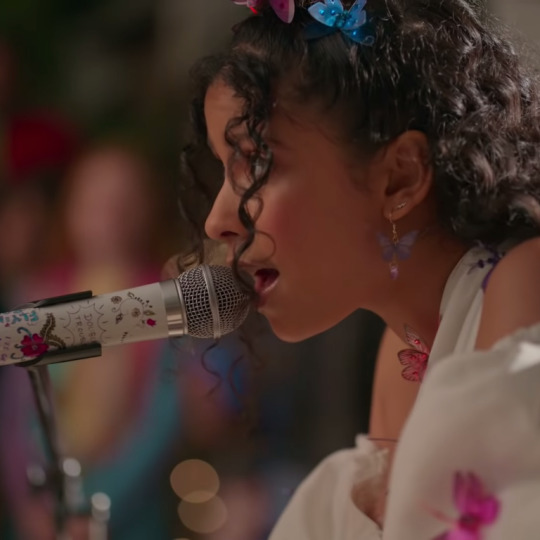







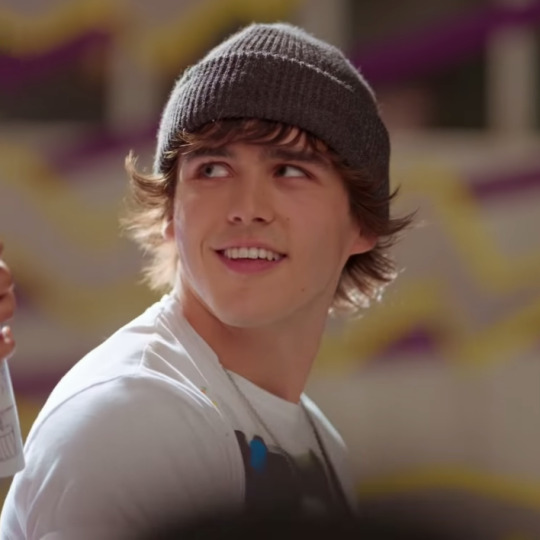
Julie and Luke Icons | Julie and The Phantoms (Edge of Great)
#julie and the phantoms#julie and the phantoms icons#jatp#jatp icons#julie molina#julie molina icons#madison reyes#madison reyes icons#julie and luke#julie and luke icons#julie and luke matching icons#luke patterson#luke patterson icons#charlie gillespie#charlie gillespie icons#edge of great
70 notes
·
View notes